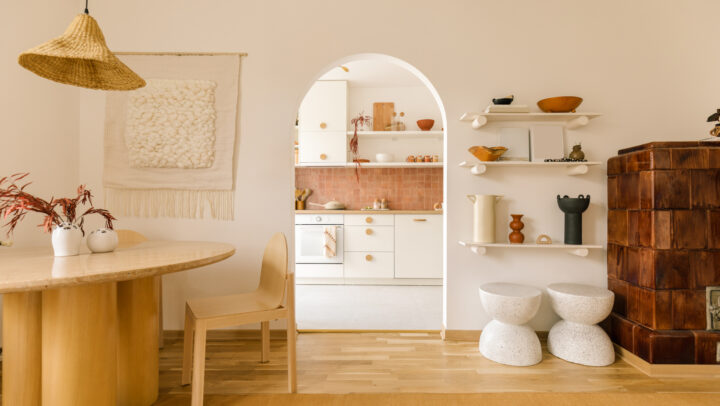Remodeling 101: Planning Your Home Renovation Project
Gearing up for a remodel? Formulate the optimal game plan and ensure success — you may even come in under budget.


Written by Grant Brissey on February 16, 2022
Maybe you’ve spent more time at home lately and want to tackle an add-on or a bathroom upgrade. Maybe you’ve got visions of a broad scale remodel on a new purchase but don’t know where to start. Whatever your reasons, you’re among the 72% of homeowners who will consider at least one home improvement project in 2022.
Projects ranging from the relatively straightforward (like updating an existing bathroom) to the extensive (like adding an entire level to your home), will benefit from following these five steps.
Identify your remodel goals, wants and needs
If your project list seems overwhelming, consider this question: What’s the goal of your remodel? Is it to provide more room and comfort for your growing family? To update the home to a more contemporary look? Do you want to increase the home’s value? Or are you trying to decide whether to remodel or sell? Answering questions like these will inform your project’s scope.
What if increasing home value is my main goal?
If your primary goal is increasing value, it pays to know which home improvements tend to foster the most return on investment.
Zillow research, conducted in partnership with Realm, finds that the projects with the highest ROI potential are low-cost ways to add living space, like conversions or additions in which the original structure isn't impacted. Building a backyard cottage, finishing a basement, converting a garage, finishing an attic, and remodeling a kitchen are projects that have the highest return on investment potential. Keep in mind increasing home value can also increase property taxes. Ideally, you’ll be able to identify projects that satisfy both domestic needs and increase value.
Prioritize needs versus wants
Next, sort out your needs and wants based on your goals, budget and functionality. For example, if you’re welcoming an aging parent into your home, your need may be to convert the basement into a mother-in-law suite or add an accessory dwelling unit to the property. On the other hand, if you're not quite ready for a major project or looking for ways to improve your living space with less money, improvising may suffice. For example, do you really need that additional bathroom? Or would adding a double vanity solve the morning rush problems?
Priorities and nice-to-haves
With needs and wants sorted, list projects from most important to least important. Decide which you can do yourself and which require a contractor. To make it fun and help you watch costs, throw in a few extras that you’d love to have but can only afford if the rest of the budget stays under control. These might include incremental kitchen upgrades, a luxurious shower head, or crown molding in the living room.
Get a home assessment
It may be tempting to skip this step, but for larger projects it’s crucial to have an expert verify that your home can withstand the renovation.
Be sure to get the structure inspected: roof, foundation, siding, plumbing systems, and electrical systems. If there are issues with any of these, such as a leak in your roof, you’ll need to fix the problems before proceeding with your remodel.
Also look into any permit requirements, local zoning laws, homeowner association rules or other requirements that may affect your projects. Accessory dwelling units, for example, may be subject to scrutiny from any or all of these factors. When in doubt, consult an expert who’s well versed in the related laws and regulations.
Set a budget
Once you settle on the scope of your project, set a reasonable budget. Then add about 10 percent more for unforeseen issues that may arise.
Depending on the size of your project and the amount of equity you’ve built, you can access different types of financing. For more on their nuances, see our guide on home improvement loans. A loan officer can help you decide which options better suit your needs. If you’re not interested in a loan, have a look at a few other creative ways to develop the funds.
Hire a contractor
If you’re already working with an architect or designer, they’ll often help you choose a contractor. Either way, here are some tips for selecting one:
Get an informed bid. Give contractors as many project details as possible so they can make an accurate bid. Be ready to provide plans, specs, and as many specific details about the finishes and materials you’re looking for as you can.
Get recommendations. Ask around: Friends, coworkers, and neighbors are all good sources for referrals. Online reviews can help you sort out the quality contractors and corroborate what a friend or colleague says. For more detail on working with contractors of all types, including general contractors, subcontractors, and design/build firms, start with this primer.
Make living arrangements
Be prepared for many people to tell you that you can continue living in your home during renovations, but in many cases, this simply isn’t practical.
If the only bathroom in the home is being renovated, it’d be difficult to live there. And if any type of demolition is going on, there’s going to be too much dirt and dust. If you’re working from home, even light work can become a heavy distraction.
So either plan to live somewhere else for the duration, or have a backup plan in case it all gets to be too much. Also consider a shared workspace or small office rental, if feasible. Plan as well as you possibly can — then expect the unexpected.
Problems often extend the length of your project and increase the cost. But with the right plan and plenty of attention to detail, your remodel will have the elements to be successful. And who knows — you might even get done early and come in under budget. Then it’s time to treat yourself.
Ready for a new address?
Get an instant cash offer or list with a local partner agent.
Explore selling optionsRelated Articles
Sell your home with a winning strategy
Here’s how to maximize your home sale with the right selling plan.

Build a smart selling plan
Talk to your agent about their marketing approach - especially online - to ensure you’re getting the best possible price for your home.



